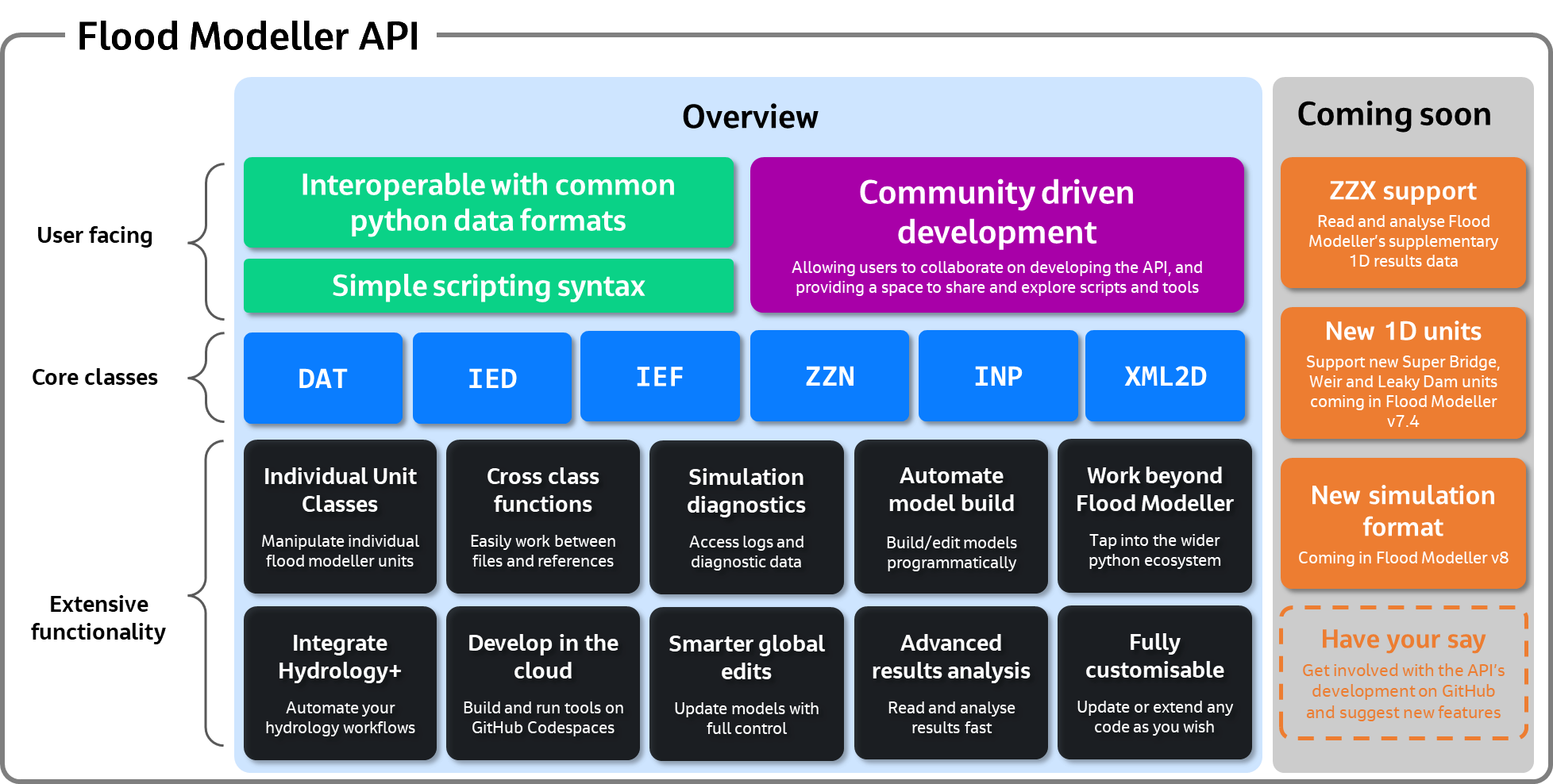API Overview#

Since the Flood Modeller API is a Python package, it is important that you are familiar with the basic concepts of Python as a programming language, particularly working with class objects. It is not necessary to be very experienced with Python, but having a grasp of the fundamentals will allow you to get the most out of the API.
The API is based around several main classes, which represent key Flood Modeller file formats: DAT, IEF, IED, XML2D, INP and ZZN. Each of these classes allow you to interact with the respective Flood Modeller file formats, by simply constructing a new class object pointing to the filepath of the file. For example, to create a new instance of a DAT class based on an existing dat file, you would call:
dat = DAT('path/to/datafile.dat')
This would then store a new object in the variable dat, based on the DAT() class.
From here, you can then work with the data using the class attributes and methods.
In addition to the main classes, there are also individual unit classes which are used to work with key Flood Modeller unit types (e.g. QTBDY, River Sections etc.). There is also a range of additional functionality in the API such as difference and equivalence methods and automatic file backups.
This documentation provides information on the main API classes, including basic examples for each, plus the attributes associated with each supported unit class.
Tip
The aim of the Flood Modeller API is not to provide any standalone tools for certain tasks (many of these are likely covered in the main software itself), but instead to give you the ability to work with Flood Modeller files in a way that can be easily built into your own automated workflows. Combined with the thousands of openly available Python packages, the possible use cases are truly endless.
Note
The Flood Modeller API is an ongoing development and as such there are many features which are not currently supported but may become available in future versions. For additional technical support, feature suggestions or bug reports please check out the GitHub site or contact support@floodmodeller.com
